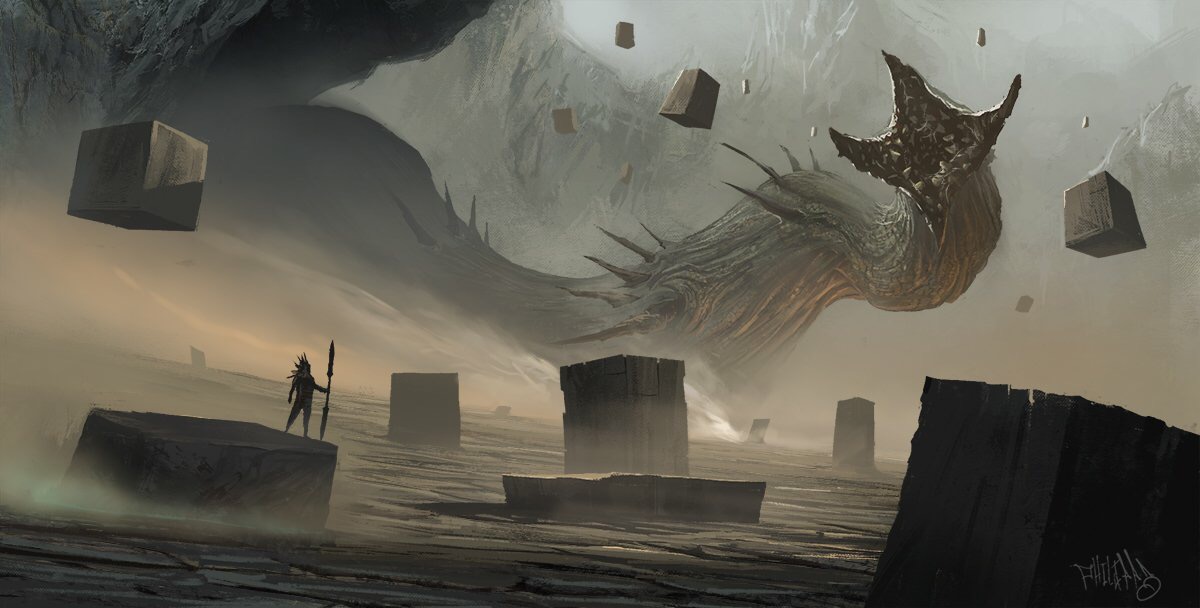War, what is it good for?
Humanoids and beasts play many different roles. Some are supreme alpha beings, others have the urge to follow and please, and yet some are just great at certain tasks. Certainly, warbands are a way of grouping monsters or humanoids into functional ecosystems. Therefore granting the monsters the ability to play a special role that benefits the group as a whole. Adding procedural generation to the mix will make for interesting encounters that you as a DM had to work less for, which lets you focus on more bigger picture things.
Therefore having creatures that define the social construct, makes it easier to tell the story. The boss is more likely to have a goal that the followers share or want to attain unless they are in a more submissive relationship. Both relationships can cater to great stories, one side is promoting and doing everything their boss would want. The other side of the coin would be promoting it even if they disagree with it because they are submissive to their bosses wills.

Enter Warbands and procedural generation
This is where you start grouping creatures that can fill out a role system. Most importantly creature in the group will fill a role that benefits the group. One creature type might handle gathering food and resources, on creature might focus on guarding these creatures, the last creature might be the head honcho that leads the group. which in turn, Each creature would have different strengths and weaknesses that fill in gaps for each other. also allowing the way they interact will make a narrative on its own.
Breaking things up into social constructs like this makes it easier to randomly generate these constructs. Having an idea of what each role might give us a variable to fill when we start making creatures to fill that role. Once we have a spot for each role, we can continue developing a plot around the goals and ideals of the “Big Bad Evil Guy”.

I’m sold… But where do we start? Where does procedural generation take place?
Usually, the grunts and the resource gatherers are going to be the lowest CR of the band. Next, are going to be the leaders and the skilled craftspeople, maybe not the highest CR, but definitely nothing to push over. Otherwise, there is the head honcho, the boss man, the creature with the plan, the boss of bosses that direct everything, this creature is great at staying in the background, making grand appearances, and packs a punch to back up all of the grandeur.
This allows us to look back on what we need and start rolling for the different roles we need to fill. Each role is crucial to the story, even the little guys play a huge part in making the big boss into the large than life creature that he might be. It also allows us to shape what this big bad evil guy might be like, his followers will all have certain ways of acting.
Once all of these variables are in place we can start thinking about all the different creatures that can fill these variables, usually creatures that are one half or fourth of what the leader or big bad evil guy might be. after using these ideas we can start forming a web that shows the relationship between all of the characters. That is when we can start the procedural generation for these creatures.

Warbands grant structure for campaigns and organizations
This structure brings depth to encounters and stories, these organizations bring ultimate storytelling. They not only bring the social construct life but also give meaning to each role holding it all up. Everything together starts making procedural generation more and more possible, which is the best generation we can ask for. Procedural generation, in this case, would allow us to view which roles would be filled with what challenge rating. After that, it would assign the job specified for each creature. Making it easier and easier to morph a story around such an organization, cult or powerful faction.
Warbands, what are they good for?
absolutely everything! They can make or break a whole campaign or at lease a silo of a campaign. They build the building blocks of the future of the campaign making way to the “Big Bad Evil Guy”. Each creature brings something to the table, even the little guys. Between resource gathering, grunt work, craftsmanship and just being a boss… it all start s somewhere.
If you would like to know more about Procedural generation, make sure to look into Procedural Generation with Beastlands. Also, give Procedural Generation with Monsters a chance! Each piece talks more about how I try to go through the motions of generating procedural monsters.

